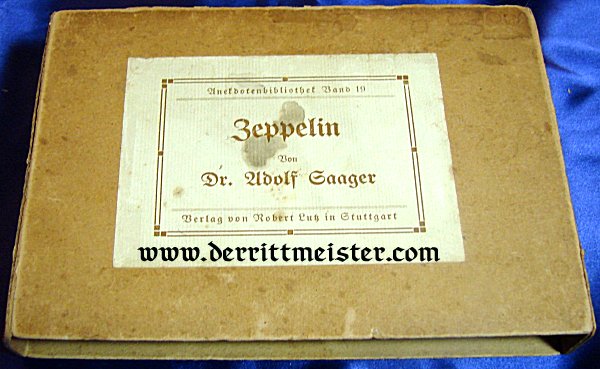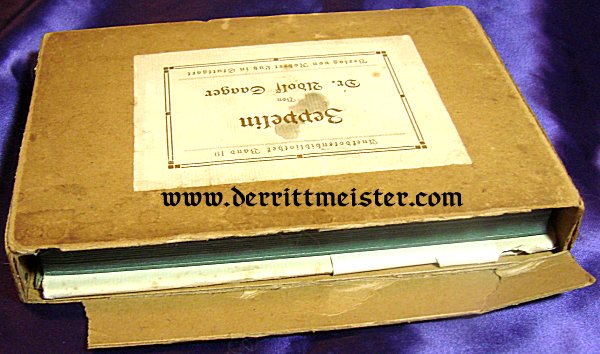Description
This is an engrossing, German-language biography of Graf Ferdinand von Zeppelin (1838-1917). Von Zeppelin had cultivated a longtime interest in airships before he even thought of producing them. He came to the USA as an observer of the Union Army’s balloon operations during 1863. Although he was still a German Army officer, he did not have an overly successful career. He retired as a Generalmajor in about 1890. It was then that he began his airship production efforts in earnest. The German public was captivated by the sight of zeppelins flying across Germany. The German public was always generous and supportive of efforts to advance German aviation. After one of the early zeppelins crashed, a large donation program was begun and a substantial sum raised. This enabled von Zeppelin to further his experiments and develop bigger and better airships. Prior to WW I more than 30,000 Germans flew on more than zeppelin 1,500 flights, with no substantial problems. As the clouds of WW I began to form, the German Army and Navy realized the zeppelins’ potential for scouting and bombing roles. The Navy had a higher profile with zeppelins than did the Army. While their actual contribution to the war effort was more psychological than material, the zeppelins did leave their mark. Peter Strasser, commander of the Navy Zeppelins (1876-1918), was a hero in Germany. For his efforts, he was awarded with the presentation of the Orden Pour le Mérite. Strasser died in a fiery crash in 1918, while leading a bombing mission in the L-70. Ferdinand von Zeppelin died in 1917, and did not see the full realization of his gentle giants’ potential. After WW I, Hugo Eckner both saved and led the company. As a part of Germany’s war reparations, Eckner and the Zeppelin Company supplied the LZ-126 to the U.S. Eckner had the instincts of a showman. He personally brought the LZ-126 to the U.S. authorities. He gained a great deal of media attention for the faltering company, which ultimately lead to the highly-successful launching of the Graf Zeppelin. The Graf Zeppelin was a commercial success. After many long voyages often personally conducted by Eckner, including around the world voyages, the Graf Zeppelin was joined by the Hindenburg. The sight of the Graf Zeppelin and the Hindenburg flying around the world gained a lot of pride, for the German people and their aviation industry. With Nazi Party’s rise to power, Adolf Hitler knew a good thing when he saw it. He began using the two zeppelins for propaganda purposes. Swastikas were placed on the two airships’ rudders. They were used extensively at the Berlin Summer Olympic Games of 1936. When the Hindenburg exploded in flames at Lakehurst, NJ in May 1937, the use of zeppelins as air transport was at an end. [As an interesting aside: in Friedrichshafen, Germany, the original site of the zeppelins’ construction, a reconstituted Zeppelin Company has a smaller version back in the air in which the public can still ride]. Getting back to our book, this is a biography of Ferdinand von Zeppelin’s life. It places special emphasis on the WW I years, as the book was written in 1915. The book is not illustrated, with the exception of a photograph and reproduction of the Graf Zeppelin’s signature. Inside, the book has been autographed by Hugo Eckner! The book has its original dust jacket. The book is housed inside of the original, cardboard protecting carton. It features the book’s name and the author.











